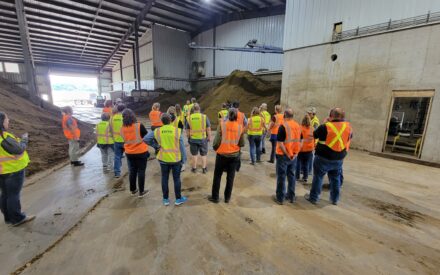Most states in the U.S. have maps of the surficial geology, the unconsolidated sediments at the earth’s surface. These maps are at a scale that is appropriate to depicting the entire state on a single map. To date, no such map has ever been created for Wisconsin. Extension’s Wisconsin Geological and Natural History Survey has focused on more detailed geologic maps that are typically presented as an individual county on a single map. These countywide maps are critical for understanding the complexity of the geology on a small scale. But having a more generalized map that shows the entire state in a single view provides the basis for evaluating and understanding geologic processes and deposits across multi-county regions.
With funding from the U.S. Geological Survey (USGS), the Wisconsin Geological and Natural History Survey is nearing completion of the first statewide map of our state’s surface geology. This map will be used for regional geologic studies, statewide evaluation and decision making, and general education. It will allow regional-to-statewide decision makers to understand the distribution of geologic materials over larger areas (for example the statewide distribution of high-quality sand and gravel deposits).
Roughly two-thirds of the state has had surficial geologic maps sufficient to show an entire county on a single map. In 2020, the Wisconsin Geological and Natural History Survey received funding from the USGS to generate an entirely new map at a larger scale. The grant brought together a core group of geologists who have been involved in every modern county-scale map that has been produced. Together, they have over 200 years’ combined experience conducting geologic mapping in Wisconsin.
The process of creating new mapping at this statewide scale requires an entirely different approach than creating more detailed mapping. County-wide maps often show geologic information in great detail, so that individual landowners could locate their own property on a county geologic map. In contrast, statewide scale mapping simplifies and streamlines the geologic information. This makes it easier to show trends and patterns across larger areas of the state rather than showing detailed, site-specific information. Thus, the geologists have incorporated the detailed countywide mapping where available, but have used their years of experience to re-map the areas in a more streamlined fashion to emphasize larger trends.
The statewide map will include data from over 900 cores previously collected from 23 different counties in Wisconsin. Additionally, we collected 54 new core samples from Buffalo, Dane, Eau Claire, Green, Jackson, Jefferson, Rock, and Trempealeau Counties to support this project.
Extension is creating a new map of Wisconsin that will help regional and statewide decision-makers detect broader patterns in our state’s geology.
WGNHS is part of Extension’s Natural Resources Institute. Learn more by visiting wgnhs.wisc.edu.
Download Article

 Protecting Water Quality through Agricultural Practices
Protecting Water Quality through Agricultural Practices Photographing Core Samples from the Department of Transportation
Photographing Core Samples from the Department of Transportation Innovating Local Government by Developing Leaders
Innovating Local Government by Developing Leaders Mitigating Manure’s Effect on Water Quality
Mitigating Manure’s Effect on Water Quality


